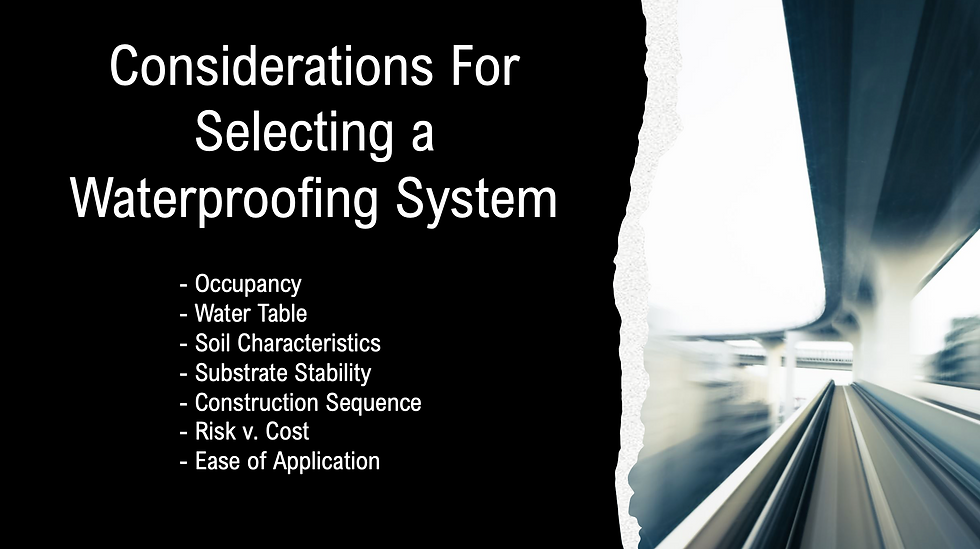Air Barrier, Vapor Barrier & WRBs
- IWS
- Mar 2, 2020
- 2 min read
Updated: Jul 27, 2020
With stricter building codes on air-control in building enclosures and energy conservation, and with current information from building scientists, air barrier materials and systems have grown increasingly important. Architects and builders are devoting more time and attention to air barriers or “air-control layers”.
Air barrier is not the same as vapor barrier. Vapor barriers prevent moisture by vapor diffusion into a building enclosure, while air barriers prevent the flow of air and the moisture it carries into the building envelope. Building scientists have placed increasing importance on air barriers as opposed to vapor barriers in most climates, as the amount of moisture carried by air is significantly greater than what is transferred through vapor diffusion.
An effective air barrier or air-control layer stops the transfer of air and moisture between the interior and exterior of a building, regulating the indoor climate. Stopping the air and moisture protects the interior of a wall assembly by shedding vapor condensation created by temperature differentials between the interior and exterior of a building and not allowing it to permeate the building enclosure.
IWS Fluid Applied Testing Results

Code compliance, for most geographical areas, state that an air barrier needs to be a continuous barrier where all breaks are to be sealed. Many construction materials such as concrete, drywall, glass, flashing tapes, caulk, and plywood operate as part of the air barrier system along with a weather resistant barrier (WRB) membrane. Ideally the WRB seals all transitions and seams between materials and creates a more effective building envelope to block air flow or vapor and is durable over the life expectancy of the building.
Two distinct types of WRB’s used in construction are wraps and fluid applied products. Looking at material properties alone, both types of products can offer effective properties, as far as air and water permeability, the factors that differ are primarily cost, performance and labor involved in application.
Wraps tend to be less expensive in materials cost, but the labor involved in adhering the wrap to the substrate and the sealing of seams and transitions can be much more extensive. The difficulty in effectively adhering wraps can be seen in wind events during construction that will blow the wrap directly off the building. Also, the application of wraps results in seams and transitions that need to be sealed to create a “continuous barrier”. These factors result in a much greater potential for error, one imperfection, slight hole or tear can comprise the integrity of the entire system and resulting problems will only compound with time.
While fluid applied product’s material cost tends to be more expensive the savings in labor and application can more than make up for it. Fluid applied products will directly adhere to the substrate they are applied to, protecting the enclosure during and after construction. The material also can easily bridge transitions, filling cracks, joints and imperfections in the substrate and transitional construction materials. Further, with the ability to more easily create a “continuous barrier” with an application that is seamless and monolithic, fluid applied WRBs can more effectively block air leakage and prevent moisture from entering wall enclosures and have much less of a chance of failure.
Contact us for more information on using our fluid applied asphaltic rubber products as part of your air barrier/vapor barrier system. WaterproofingRedefined.com/contact







Comments